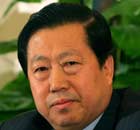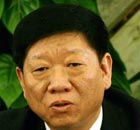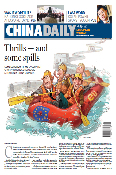Tapping development potential
Updated: 2010-04-26 08:03
By Zhang Monan (China Daily)
Industrial restructuring, financial upgrades and regional balances should play strategic roles for China
China should strive to forge a dynamic economic and industrial development strategy to fuel its fast-driving economic locomotive at a time when the world economy is changing.
|
||||
The increasingly fierce political games among the world's major powers in the post-crisis period are also expected to be a huge challenge for the global economy in returning to steady growth. Against this backdrop, China should make multiple efforts to start a new economic growth cycle.
The world's experience indicates that a country's new round of economic growth is based on its application of new technologies and the building of reasonable and scientific structures for industries, demand and energy and a coordinated regional economic model.
The ongoing upgrade of China's industrial structure and technological progress fuelled by its accelerated industrialization and urbanization will drive its economic growth. The country's vast area of land, its abundance of natural resources, and the complimentary nature of its industrial structure and economic development levels of different regions have put the world's third-largest economy at an advantage over other countries.
The distribution of resources nationwide, its booming infrastructure construction and sufficient supply of raw materials, together with a free transfer of labor forces in the years ahead, are expected to inject a new vitality into China's accelerated campaign to expand domestic demand and upgrade industrial structure in the pursuit of sustainable economic growth. In this process, unremitting efforts should be made to facilitate the change of the country's industrial structure, now dominated by the traditional manufacturing sector, to one that mainly consists of services and high-tech manufacturing sectors.
The "made in China" brand should be confined to traditional processing trades, light industries and the low-end manufacturing sector. Instead, it should take aim at equipment manufacturing, information technology, and aerospace and other strategically important sectors. Correspondingly, the development of these industries with close correlations, huge elastic demands and high capital intensity will boost the depth and efficiency of China's ongoing industrial expansion programs. It will also be of great significance to the country's pursuit of a new round of economic growth and its crusade to change the imbalanced global economic order.
Due to its abundance in natural resources and its forestry, maritime and ecological diversity, China should make efforts to develop and build up some resource-based sectors. Workable measures should be taken to further tap into the country's advantages in resources, cultivate homegrown brands, and improve industrial-added value in a bid to transform its abundant resources into industrial and economic advantages.
Paper's Digest

Chinese jet takes on Big 2
First large commercial plane set to ride on demand for aircraft as economy grows.
Super-CPU only for domestic eyes
Specials

Gaining ground
Doing business in china for westerners has come a long way, Peter batey says.

Safeguarding environment a priority
China continues to face mounting pressure to curb environmental degradation, despite progress in reducing pollution over the last five years, the environmental protection minister warned.

Employment to remain a continuing challenge
China's top labor official said the country will face a tough employment situation in the next five years.




